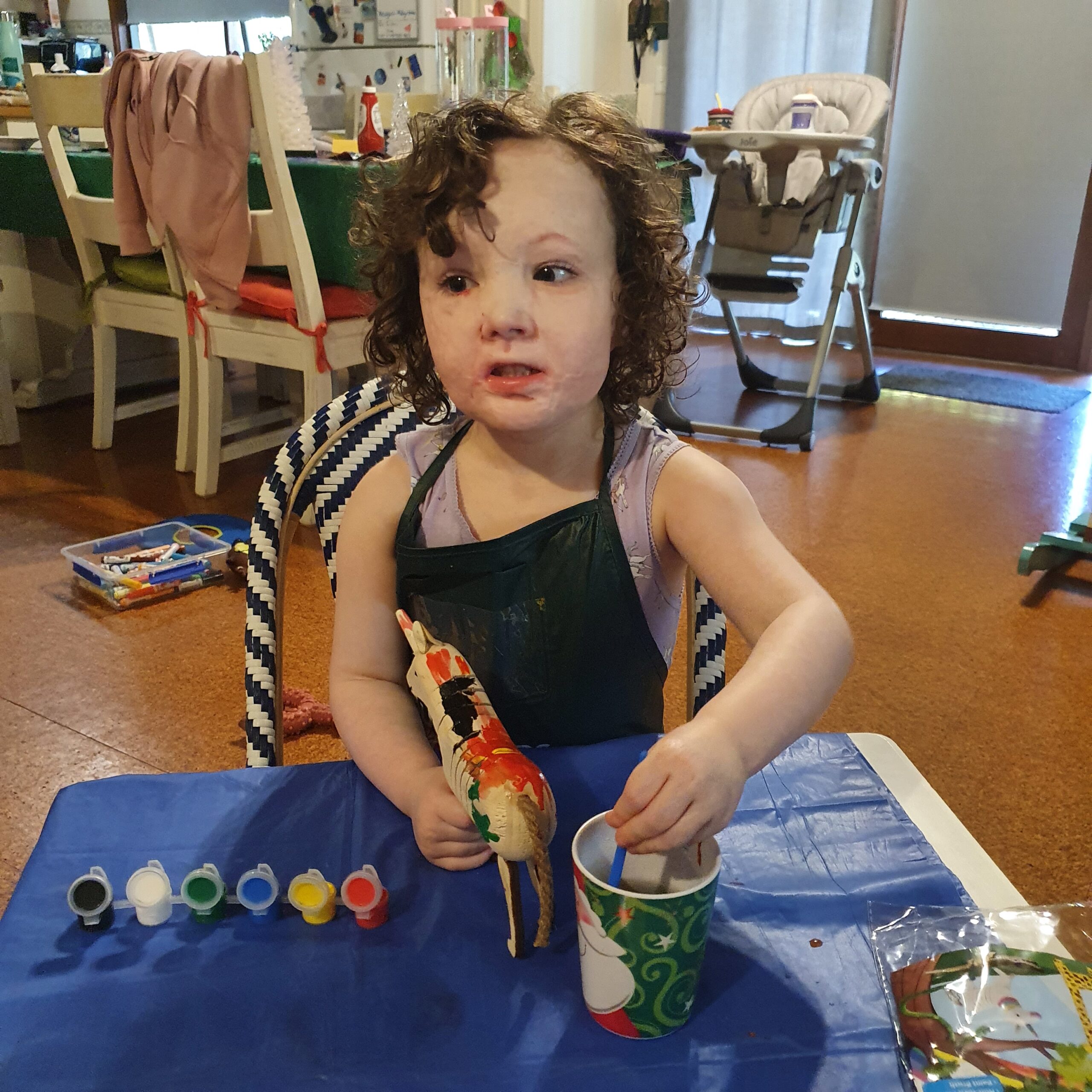
Every week over 19 children are admitted to burns units across Australia and New Zealand. The location where over three quarters (76%) of these burn and scald injuries occur is the place we all believe should be the safest – our homes.
Last June we shared a story about one of these children – little 2-year-old Gracie – to highlight just how quickly burns and scald injuries can happen and the lifelong impact they can have.
This month we checked in with her Mum, Jess, to see how her recovery is going.
There are a lot of different numbers in Gracie’s life…
22 – The number of months since her life was forever changed
6 – The number of surgeries Gracie had to endure to apply donor and fake skin to her body
4 – The number of skin grafting surgeries she’s had
7 – The number of months in between her first two rounds of laser surgery to reduce scarring
“Her burns were so deep she didn’t look like my little girl anymore.”
September 27th 2020 was a normal day for the Gardner family. Jess was at work and her husband was home with their two children, Gracie, 2 and Chloe, aged 4.
Whilst he was using the stove, suddenly a spark set alight his arms and in the chaos, little Gracie also became ignited.
Her Mum, Jess, recalls:
“I got a call to say I needed to come home immediately and that Gracie was hurt. I had no idea how bad it was until I reached the ambulance.”
Gracie was rushed to hospital as Jess was prepared for the worst.
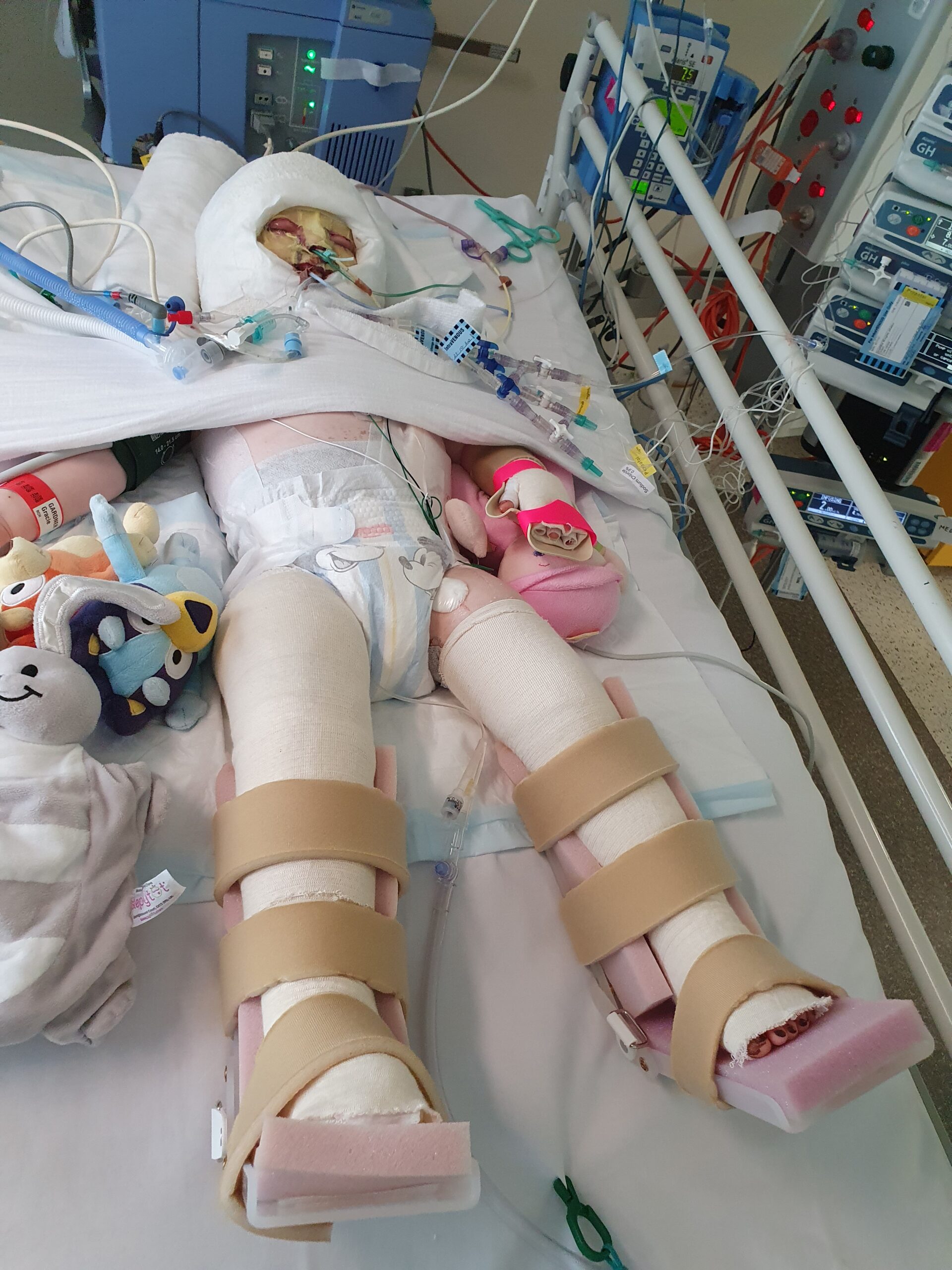
She had significant burns to 40% of her tiny body and with so much swelling, it was hard for the Doctors to know just how much damage there would be or even if she would survive.
As Covid-19 was so prevalent at this time, Jess was all alone.
“I FELT SO SCARED. I THOUGHT I WAS GOING TO LOSE HER.”
“Her burns were so deep and she didn’t look like my little girl anymore. I’ve never felt so desperate and alone, especially as no one else was allowed into the hospital to see her,” expressed Jess.
Gracie spent 5 weeks in an induced coma. Doctors woke her for 3 days to see how she would fare with breathing and then put her back in for a further 2 weeks to ensure she would remain stable.
Those 5 weeks were the most difficult weeks of Jess’ life as she juggled parenting Chloe (now 5 years old) and being by Gracie’s bedside.
“I WAS JUST NUMB, IT DIDN’T FEEL REAL. THIS HAPPENS TO OTHER PEOPLE, NOT US…”
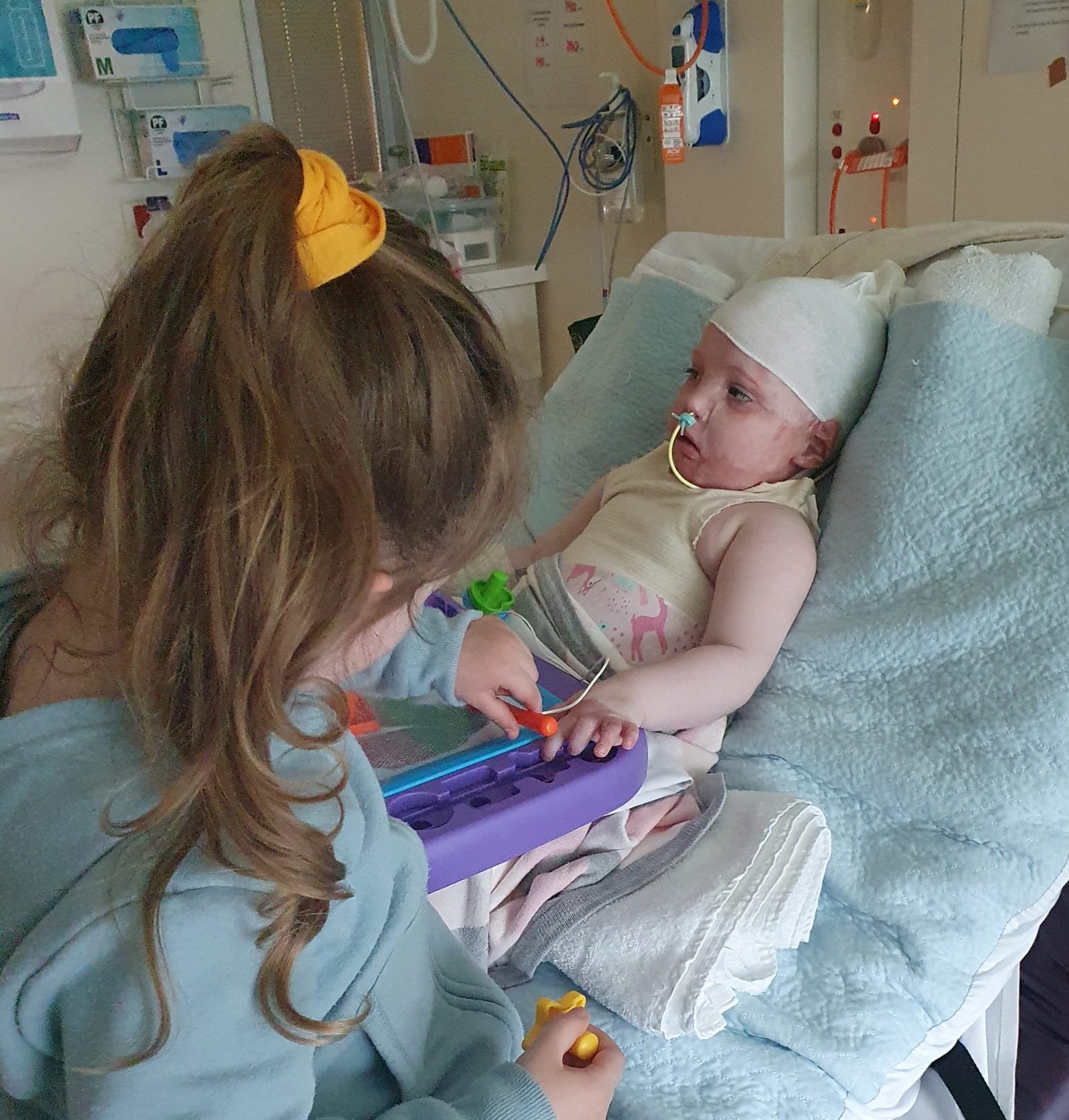
Over the next 3 months Gracie endured treatment to her entire face, both legs, the tops of both feet, stomach and she lost one ear completely and half of the other.
Incredibly, on the 29th December, Gracie came home – the best Christmas gift her family could have wished for.
Unfortunately, the story doesn’t end there.
“She had to learn to walk again”
“Gracie has had to be taken back in for multiple operations to have the grafts broken and redone. It’s so traumatic every time.”
Most recently Gracie has had to have more grafting done on her right foot. The tendons on her foot had shrunk and were pulling her toes up, making it difficult for her to walk.
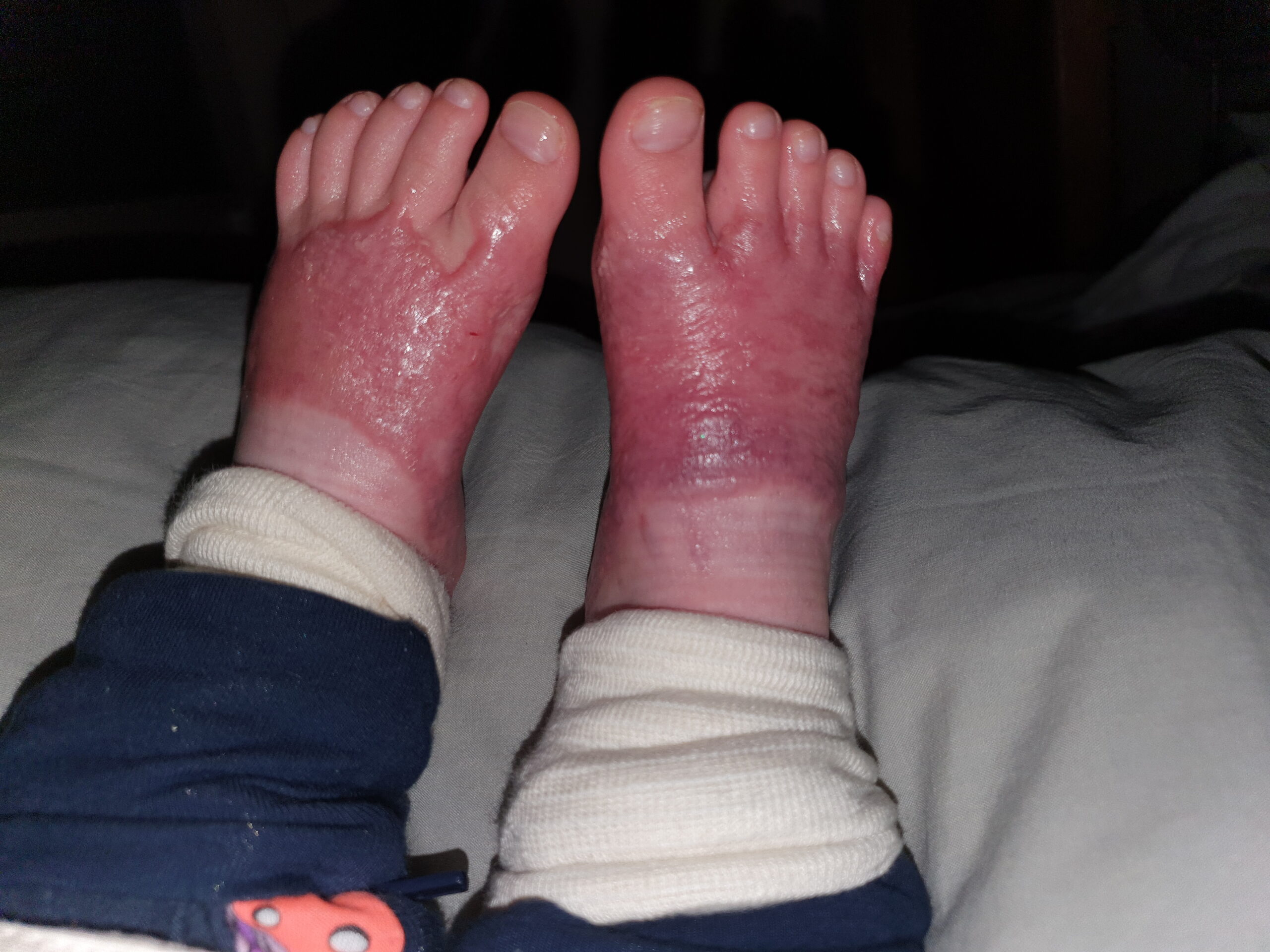
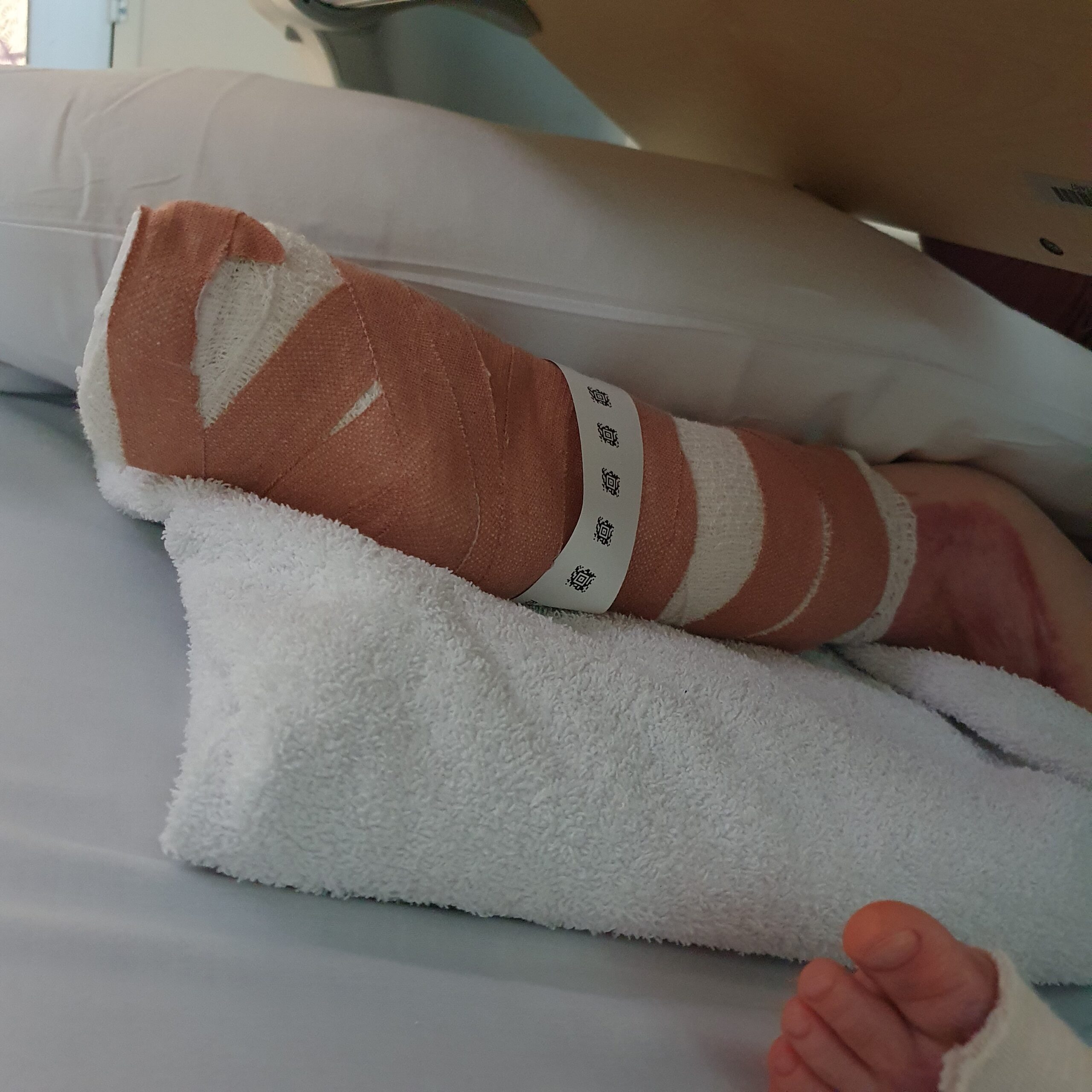
“They broke the grafts on her foot so they could pull her toes down. They’re still not all the way down, but a lot better.”
“She had to be in a full leg cast for 4 weeks, then an overnight half cast for another 4 weeks.”
“Then she had to learn to walk again. She’ll never walk the same way as she used to before the incident…taking very little steps….it just looks really different and it’s really difficult to find shoes for her that are soft enough and won’t dig into her.”
Gracie’s recovery has come a long way in the last 12 months
12 months ago Gracie was not able to go out in the sunshine at all – meaning no park play days – and she wasn’t allowed to go near sandpits due to the risk of infection.
Now she can play outside regularly – she has been to the ocean once and with special care she can even play briefly in the sand.
“She loved it! The salt water has to be rinsed off straight away so the salt doesn’t sit on her skin and dry out the grafts or cause infections. And she still has to have SPF 50 all over and wear shoes in the water.”
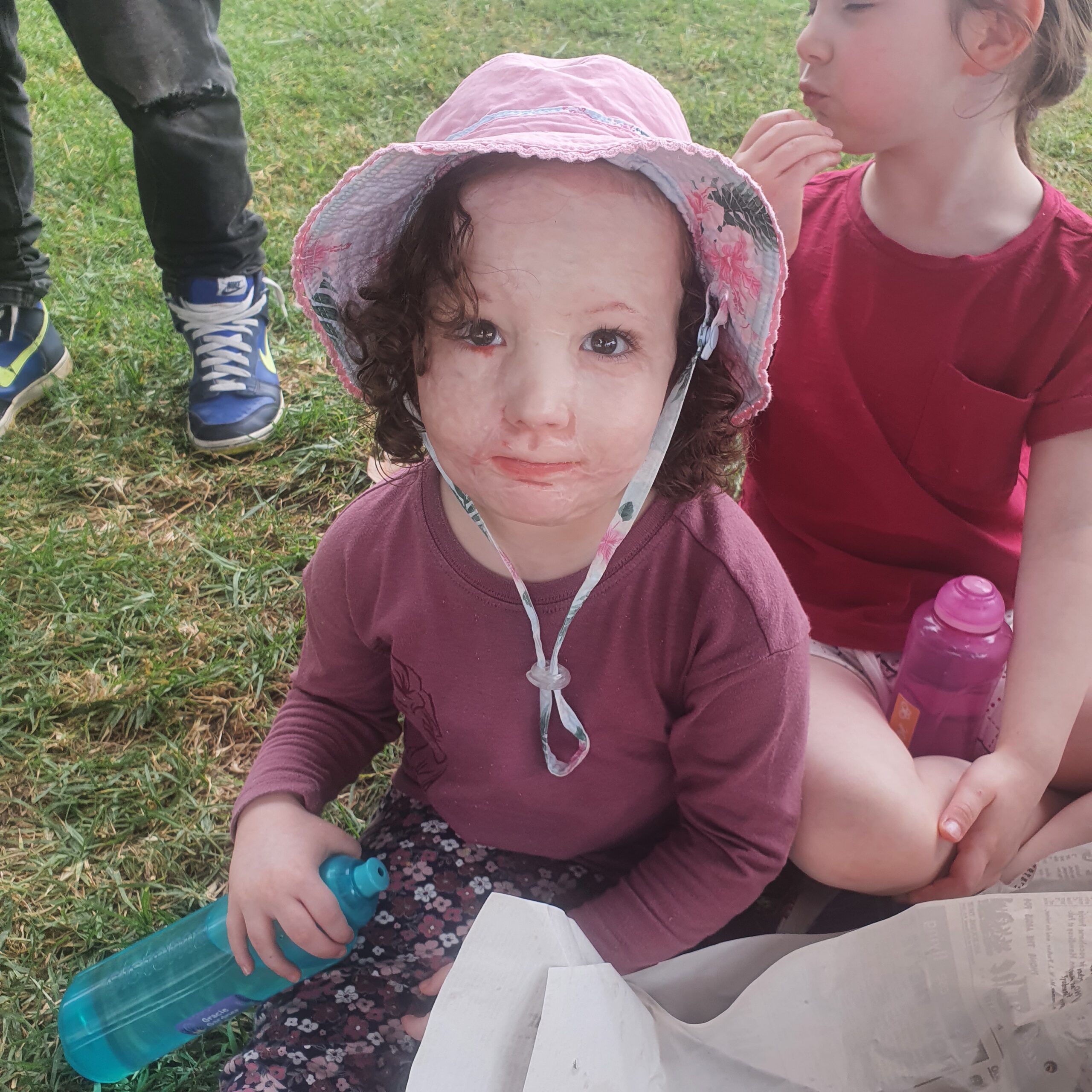
She doesn’t wear a compression mask now, but still needs silicone sheets on her face overnight, moisturiser 2-3 times a day, and wears compression pants on her legs and stomach 24 hours a day (except for bathtime).
But while there has been a lot of progress in her recovery, and the daily care routine isn’t such a shock as in the beginning, it is still a long road ahead for the family.
“Every day is still a struggle now. More emotionally – physically it’s a routine now because we’ve had to do it for so long. But we soldier on…some weeks are better than other weeks.”
“It’s very hard trying to explain she can’t go outside”
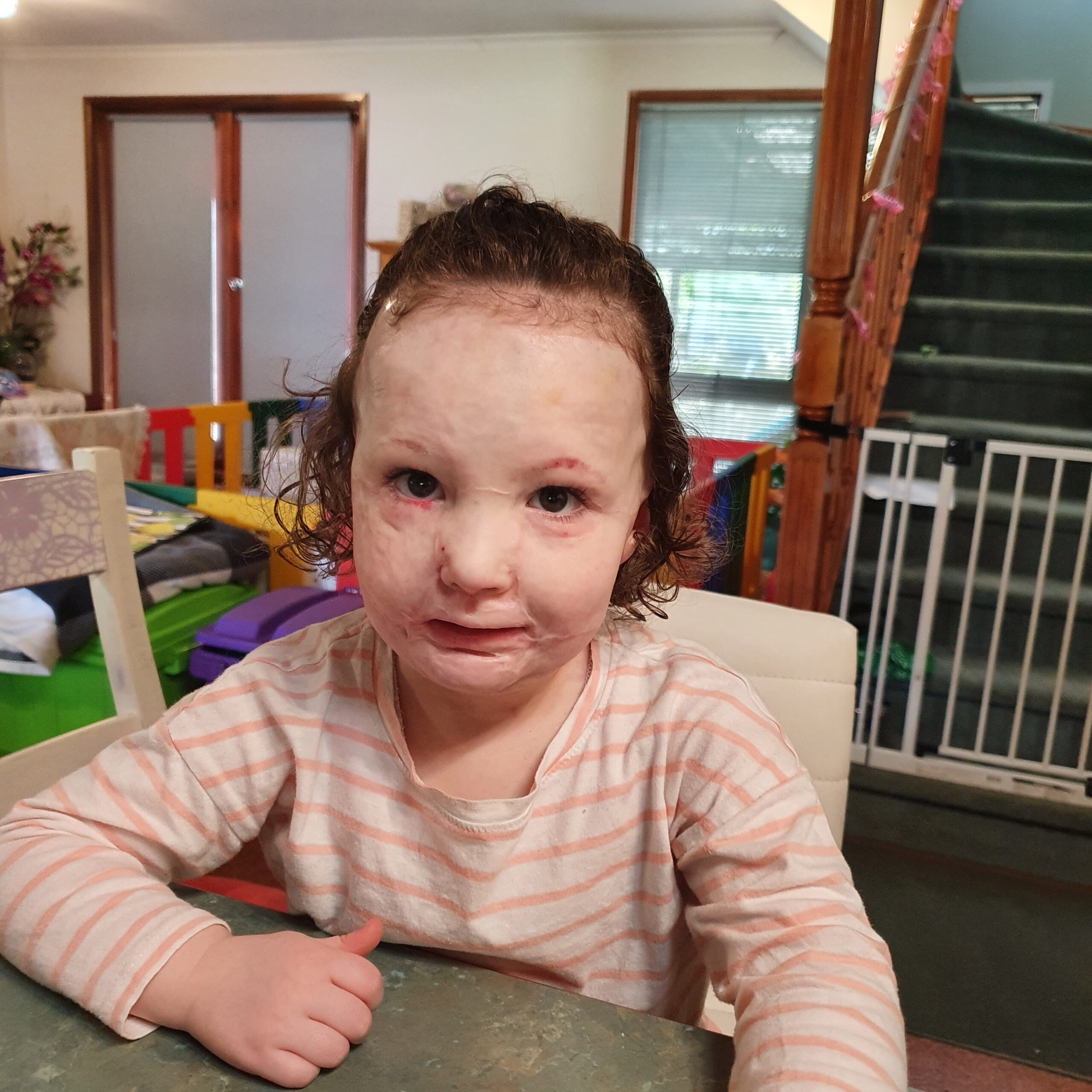
Over time Gracie’s smooth face grafts have thickened, but the hope is that laser surgery will help.
“Her scars from where they joined the skin on her face have thickened, so now she is having laser surgery on her scars.”
“After the first round she had to be ‘locked up’ indoors for 6 weeks – no sunlight at all. She’s had two rounds so far and it will be the same routine for 6 weeks after each laser surgery she has.”
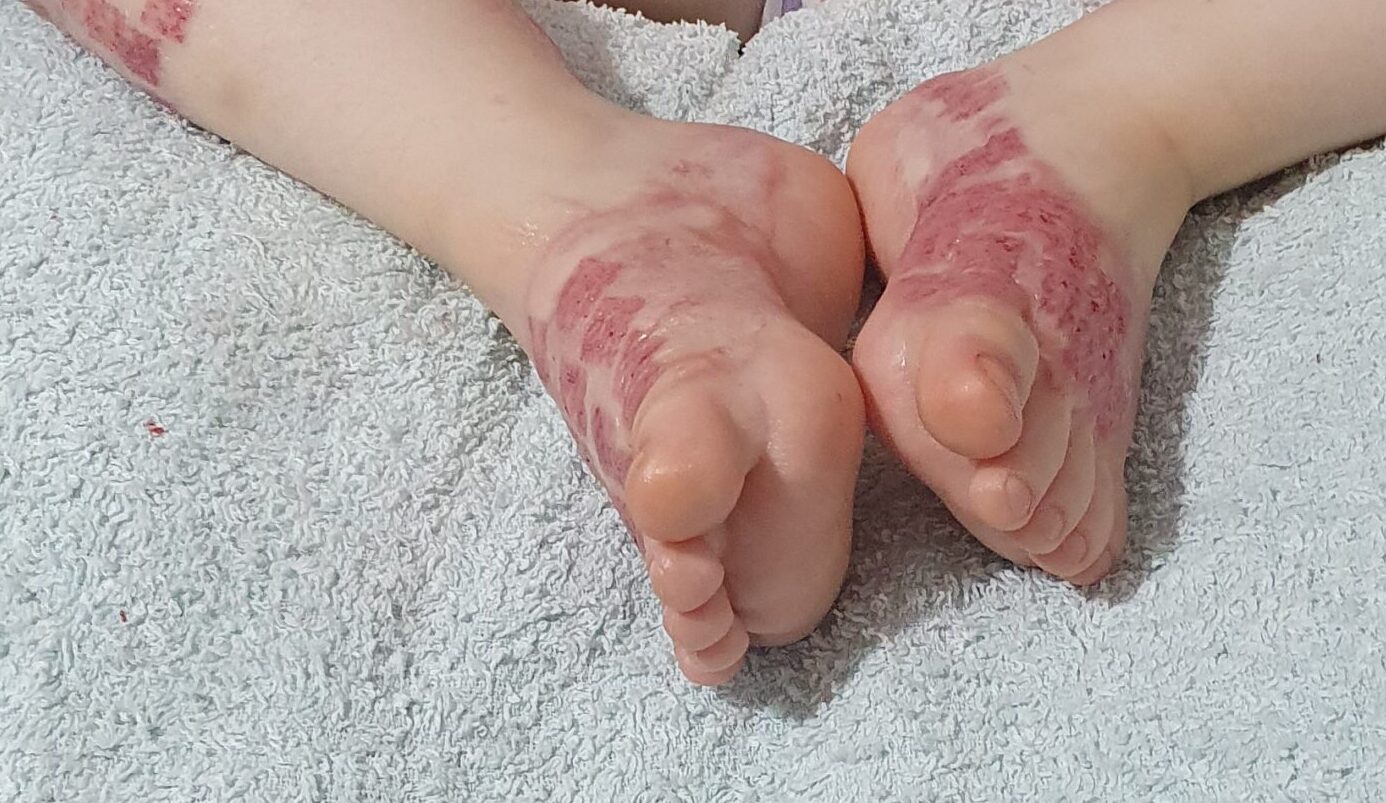
Gracie will have countless surgeries in her future
Gracie has a lot of surgeries in her immediate future – laser surgery to help reduce scarring, and a big operation to rebuild a new ear. Hopefully someday she will even have an operation to rebuild some of her hair follicles – however that will be when she is a lot older as it has to be done while she is awake.
“The skin around her right ear is pretty much gone now – the skin on the top over her ear has been pulled down as the grafts have become tighter over time. She still has a hole, but they need to re-build her a new ear. But that won’t be for a few years as they need to wait until her head is adult-sized.”
“The thought of what they have to do in the surgery to repair what little ear she has left – feels gut wrenching…terrifying to think about it.”
Even with all of these amazing and revolutionary surgeries, her Mum Jess still worries about Gracie’s future as she will never be quite the same as she was before the burn incident.
What can you do to prevent burns in your home?
After everything Gracie’s Mum, Jess, has been through, she is pleading with anyone looking after children “never think it can’t happen to you”.
To help you prevent burns and scalds in your home, we have developed a free Burns Safety Checklist. Some of the key tips from the checklist include to:
- Keep children out of the kitchen, especially during meal preparation times
- Use the back hot plates when cooking to prevent pots being pulled down
- Place hot drinks away from table edges and never hold a child and a hot drink at the same time
- Limit the hot water delivery temperature in your bathroom to max 50 degrees
- Keep appliances such as irons, kettles and hair straighteners out of reach of children
- Ensure children eat hot food sitting up at the table
What can you do if the worst happens?

If a burn or scald does occur, would you know what to do?
The statistics show that 26% of children admitted to burns units did not receive the recommended ‘gold standard’ initial first aid treatment for their burn injury. This significantly impacts the long-term outcomes of burn injuries.
The correct first aid treatment is to Remove, Cool, Cover and Seek.
It’s crucial to place the burn under cool running water for 20 minutes. Forget about any of the weird and wacky treatments that may have been suggested in the past (things like using butter, oil, ice, toothpaste or even fish sauce to treat the burn) – these can make the burn worse!
For more information on each of the first aid steps, please visit https://www.kidsafevic.com.au/home-safety/fire-safety-burns-and-scalds/
NATIONAL BURNS AWARENESS MONTH
National Burns Awareness Month is an initiative run by Kidsafe Australia in partnership with the Australian and New Zealand Burns Association (ANZBA). The campaign runs at the beginning of winter in June each year as there is a significantly increased risk of burns during winter months. A series of national educational and awareness initiatives will be delivered throughout the month to raise awareness regarding the prevention and correct first aid treatment of minor burns and scalds.
For more information about National Burns Awareness Month, please visit:
-
- Kidsafe Australia
- ANZBA – the peak body for health professionals responsible for the care of the burn injured in Australia and New Zealand
- Twitter @BurnsAwareMonth
- Kidsafe Victoria Facebook or Instagram

